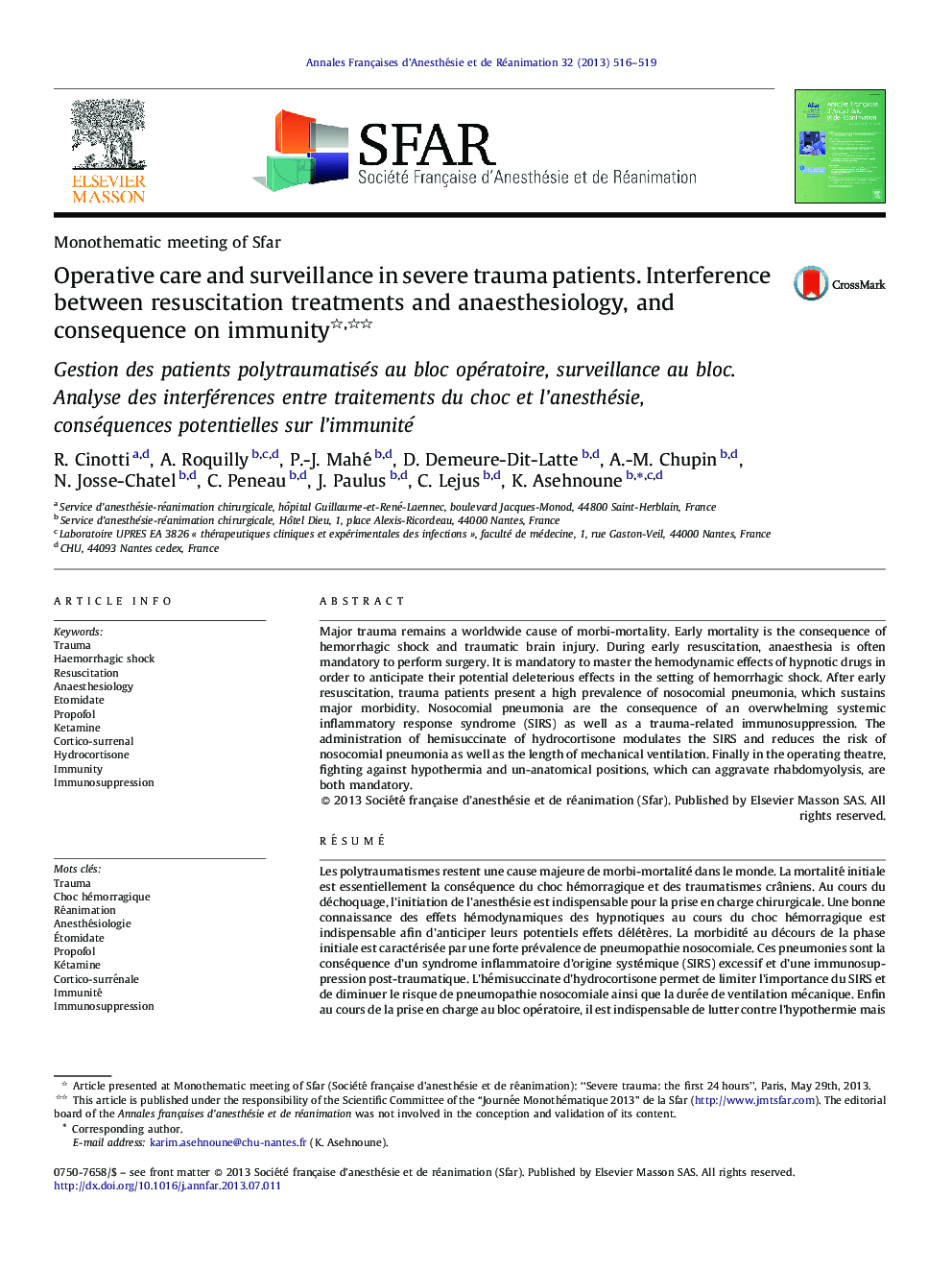| Article ID | Journal | Published Year | Pages | File Type |
|---|---|---|---|---|
| 2745714 | Annales Françaises d'Anesthésie et de Réanimation | 2013 | 4 Pages |
Major trauma remains a worldwide cause of morbi-mortality. Early mortality is the consequence of hemorrhagic shock and traumatic brain injury. During early resuscitation, anaesthesia is often mandatory to perform surgery. It is mandatory to master the hemodynamic effects of hypnotic drugs in order to anticipate their potential deleterious effects in the setting of hemorrhagic shock. After early resuscitation, trauma patients present a high prevalence of nosocomial pneumonia, which sustains major morbidity. Nosocomial pneumonia are the consequence of an overwhelming systemic inflammatory response syndrome (SIRS) as well as a trauma-related immunosuppression. The administration of hemisuccinate of hydrocortisone modulates the SIRS and reduces the risk of nosocomial pneumonia as well as the length of mechanical ventilation. Finally in the operating theatre, fighting against hypothermia and un-anatomical positions, which can aggravate rhabdomyolysis, are both mandatory.
RésuméLes polytraumatismes restent une cause majeure de morbi-mortalité dans le monde. La mortalité initiale est essentiellement la conséquence du choc hémorragique et des traumatismes crâniens. Au cours du déchoquage, l’initiation de l’anesthésie est indispensable pour la prise en charge chirurgicale. Une bonne connaissance des effets hémodynamiques des hypnotiques au cours du choc hémorragique est indispensable afin d’anticiper leurs potentiels effets délétères. La morbidité au décours de la phase initiale est caractérisée par une forte prévalence de pneumopathie nosocomiale. Ces pneumonies sont la conséquence d’un syndrome inflammatoire d’origine systémique (SIRS) excessif et d’une immunosuppression post-traumatique. L’hémisuccinate d’hydrocortisone permet de limiter l’importance du SIRS et de diminuer le risque de pneumopathie nosocomiale ainsi que la durée de ventilation mécanique. Enfin au cours de la prise en charge au bloc opératoire, il est indispensable de lutter contre l’hypothermie mais également contre les installations non anatomiques sur la table chirurgicale pour ne pas majorer le risque de rhabdomyolyse.
